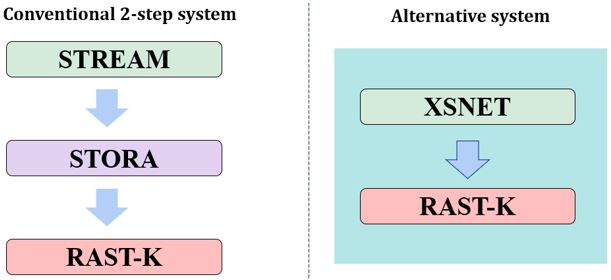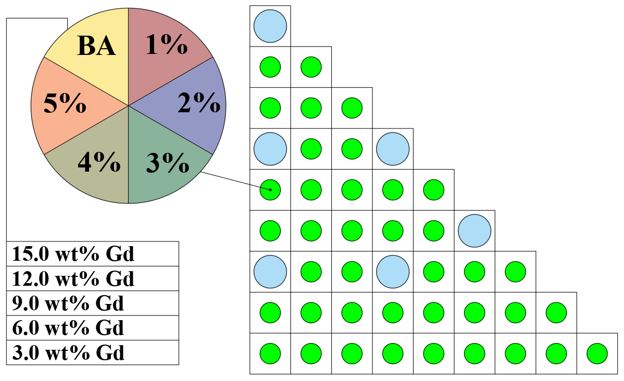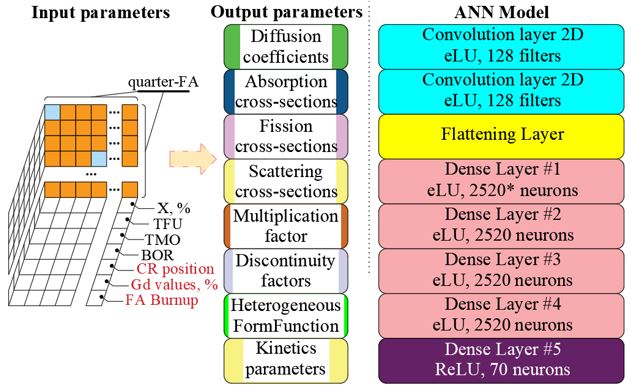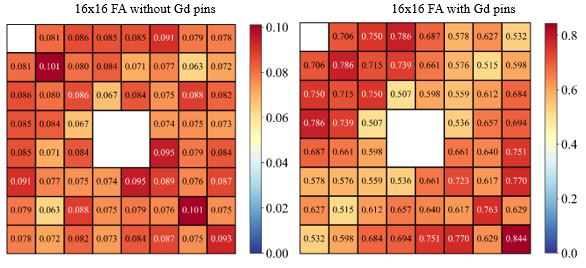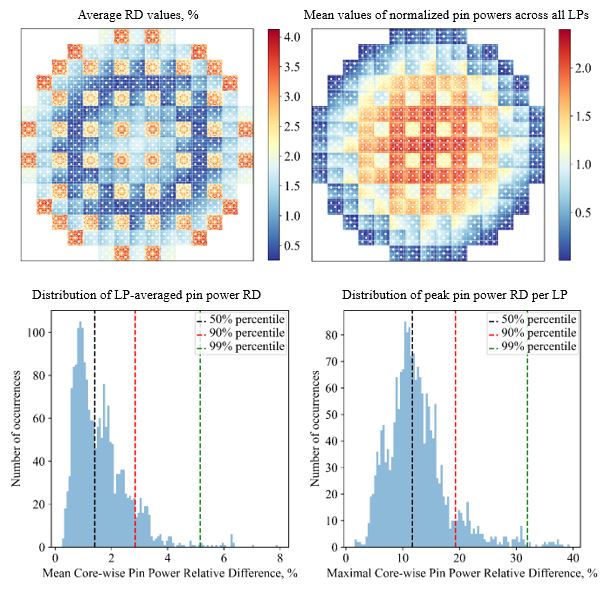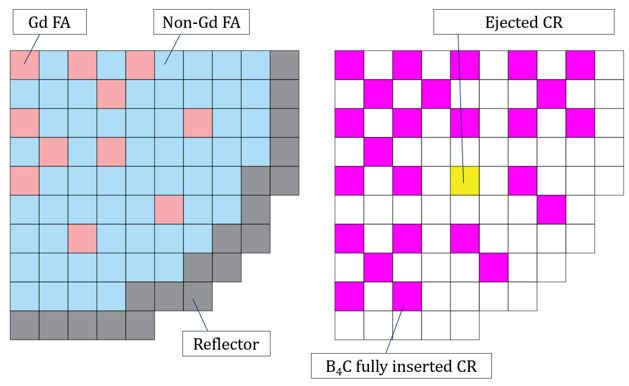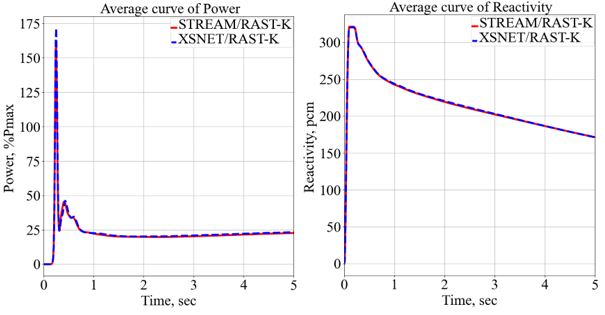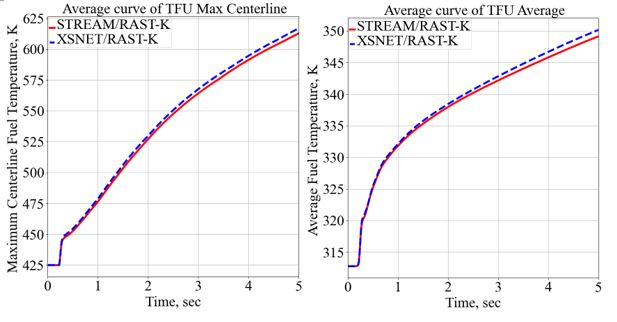Download Intro_XSNET (to be prepared)
XSNET
The Recommended Publication for Citing
- Siarhei Dzianisau, Deokjung Lee *, “Application of Artificial Neural Network for Assembly Homogenized Equivalence Parameter Generation,” Prog. Nucl. Energy. http://dx.doi.org/10.1016/j.pnucene.2024.105285 (2024)
- Siarhei Dzianisau, Deokjung Lee*, “Transient Capabilities of Deep Learning Assisted Code RAST-AI,” KNS Spring Meeting, Jeju, South Korea, May 18-19 (2023)
- Siarhei Dzianisau, Korawit Saeju, Hyun Chul Lee, Deokjung Lee*, “Development of an Artificial Neural Network Model for Generating Macroscopic Cross-Sections for RAST-AI,” Ann. Nucl. Energy, 186:109777. http://dx.doi.org/10.1016/j.pnucene.2023.109777 (2023)
Introduction
Conventional 2-step reactor simulation code systems are used abundantly for steady-state and transient reactor simulations. The main advantage of 2-step approximation is the speed of nodal diffusion codes, which is more than sufficient for core-wise calculations. The slowest part is the lattice physics code calculation required to generate homogenized equivalence parameters for each used fuel assembly (FA). However, some applications, such as designing new cores or introducing core-wise optimizations of FA structure, could require generating such parameters for thousands of different FA configurations. Therefore, we have been developing a surrogate model that could replace the lattice physics code as a whole.
In our prior studies, our ANN-based models could handle various FA geometries and generate a wide range of homogenized parameters. However, to become truly practical, such models must be able to produce the entire output file of a lattice physics code, which is, in the case of our in-house code STREAM, an STN file that contains the following parameters: homogenized equivalence parameters for more than 300 various standpoints with variation in fuel temperature, moderator temperature, boron concentration, control rod position, FA average burnup, etc. A list of parameters must be generated for each standpoint, also called a branch. It includes homogenized cross-sections and heterogeneous form functions (HFF), nuclide densities, kinetic parameters, and other valuable output parameters thought only to be generated via a conventional neutron transport code solution. In total, a typical STN file contains more than 100,000 lines of data, which seems to be an impossible task for any of our previous models.
Our newest ANN model, the XSNET, is a game-changer. It replaces STREAM in generating the STN file for 16×16 and 17×17 FA types. As a pre-trained model, it can generate an entire STN file in seconds, if not milliseconds, a task that would take STREAM 20-30 minutes using a single CPU core. XSNET supports depletion calculations, transient calculations, and other calculations expected from our nodal diffusion code RAST-K, but it also opens a new window of opportunities for reactor simulations.
Feature
– XSNET directly replaces our lattice physics code STREAM and is coupled with our nodal diffusion code RAST-K via an STN file.
– XSNET can generate all parameters in an STN file with decent accuracy, allowing all kinds of nodal diffusion calculations available in RAST-K, including depletion and transient calculations.
– Since XSNET was developed in Python, it offers various options for automated input processing and can directly process STREAM input files.
Developer
– Prof. Deokjung Lee: Supervision, funding
– Siarhei Dzianisau: Conceptualization, model development, tuning, improvement, coupling with a nodal diffusion code.
Brief Results
Generation of HFF for 16×16 FA (mean relative difference in %)
Pin power value for OPR-1000 full-core (mean relative difference in %)
Transient calculation for APR-1400 (Hot zero power rapid ejection of a fully inserted control rod)


